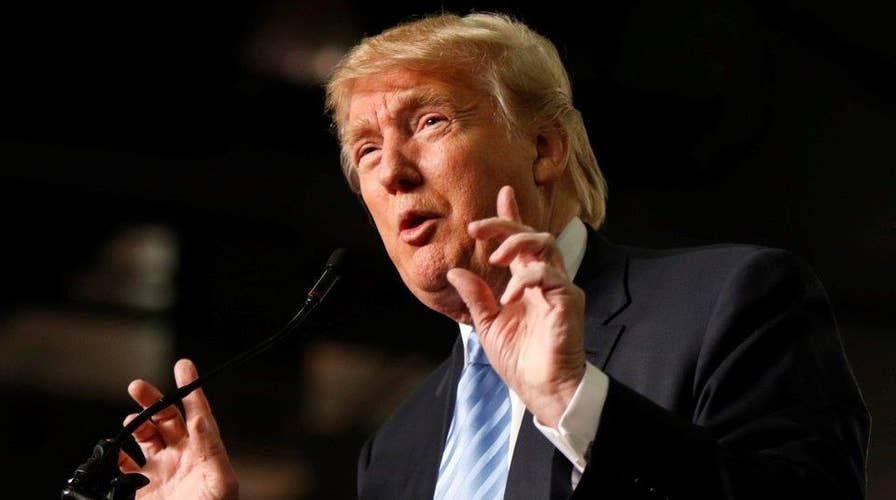Should Donald Trump focus on jobs and the economy?
Team Trump revamps messaging as Election Day looms
The year 1994 was a pivotal, landslide year for Republicans.
The GOP seized control of the Senate from Democrats for the first time in eight years. But the big story was the historic win by Republicans in the House. Republicans netted a staggering 54 seats, flipping the House to their control for the first time since 1952.
Several things worked in the GOP’s favor.
Republicans successfully portrayed President Bill Clinton as a “tax and spend” liberal and propounded the so-called “Contract with America” as their electoral promise.
They excoriated the Clinton over the Whitewater land deal in Arkansas and his effort (alongside that of spouse Hillary Clinton) to move health care reform legislation through Congress. Health care reform died miserably, never even hitting the floor.
In retrospect, some Republicans now may take the Clinton proposal over ObamaCare, which didn’t develop until 16 years down the road. But that’s another story.
Combine GOP efforts to tarnish Clinton’s record with the impacts of redistricting from the 1990 census and congressional Democrats were cooked.
One would think that sophisticated political analysts would be prescient enough to see such a landslide months in advance. However, the most compelling narrative of the 1994 midterm elections was that virtually nobody was able to detect the possibility of one of the most lopsided shellackings in American history until just a few weeks ahead of time.
This brings us to this year’s House and Senate contests and what could happen down ballot. There are questions about what November could mean for congressional Republicans if GOP presidential nominee Donald Trump continues to perform as poorly as he is now and Hillary Clinton, the Democratic nominee, ignites the Electoral College scoreboard.
We have known since before this election cycle started that retention of the Senate for Republicans was a jump-ball proposition at best.
However, the House is another story. It has always been a challenge for Democrats to cobble together an electoral strategy that bounces the GOP from the majority and pockets them 30 seats.
Democrats salivated at the possibility of Republicans nominating a candidate like Trump or Texas Sen. Ted Cruz, thinking either would be so toxic that it could help them in congressional races.
Well, Democrats got their wish. Even so, Trump’s nomination doesn’t predict much of anything for House contests this fall.
Yet.
Yes, it’s August. Early voting begins in many states in about four weeks. So far, there’s little reason to think the House is in jeopardy for Republicans. And if there is going to be a hint that the House could flip -- like 1994 -- such indiciators are most likely going to emerge rather late.
It won’t take 54 seats. But a 30 seat bar is a lot for Democrats. And handing over control of the House to the Democrats constitutes a landslide.
Major factors still inhibit Democrats from having a snowball’s chance of picking up the lower chamber. They’ve struggled to recruit strong candidates in some key districts.
Some may even criticize Democratic leaders for failing to convert the Trump nomination into a cakewalk for House Democrats. In other words, if the GOP could galvanize opposition around Bill Clinton in 1994, shouldn’t Democratic demonization of Trump be child’s play in 2016?
To be fair, those aren’t apples to apples comparisons.
One of the biggest problems House Democrats face is the political map. In the 22 years since the Republican sea change, both parties have worked to narrow the playing field. They segregated Democratic and Republican votes into districts that are more and more Democratic or Republican.
The result is that electoral politic experts denote only about 56 districts out of 435 as competitive. That means Democrats have to hold the approximately dozen seats they now control -- which are in the swing category -- and simultaneously lock up three-quarters of every GOP seat that could fall into play.
But that doesn’t tell the full story.
In reality, only about 25 seats are truly competitive. The issue for Democrats is that there might not be enough seats available to flip to capture the House.
Here’s another problem for Democrats. The electorate isn’t excited for Hillary Clinton. However, Democratic voters are energized against Trump.
Still, that cuts two ways. Many Republicans may not be ready to vote for Trump. But theories now abound that GOP voters could show up to vote Republican in House and Senate contests to represent a check against Clinton, should it be obvious she may win.
All of this centers on turnout.
Trump’s nomination could spark a sit out by Republicans. Couple that with an Electoral College landslide by Clinton and various House contests that aren’t on the board now could become competitive in late September and October.
Trump’s hiring of Breitbart CEO Steve Bannon could result in the unleashing of an even more bellicose nominee.
If that’s the case, congressional Republicans are in trouble and will have to scramble to further distance themselves from the top of the ticket. Of course, the good news on that front is that many Republicans are running races that form a firewall between them and Trump. That strategy has been in place for months.
One of the best things going for Republicans is that they sit on an historic majority that could serve as a failsafe.
In 2014, House Republicans won 247 seats, their biggest majority since 1928. The 2010 Census and subsequent redistricting process dramatically favored Republicans. The body politic still feels reverberations from those electoral exercises.
The Census and redistricting stopgaps could mean there’s almost no way for Democrats to claim the House until the midterm election of 2022. That would follow the 2020 Census and another round of reallocating congressional seats.
An Electoral College landslide in favor of Clinton -- coupled with a prodigious number of Republican voters simply staying home -- is probably the best scenario Democrats can hope for in House races this year. Electoral College landslides aren’t enough.
Republicans only earned 12 seats in 1984 after President Ronald Reagan won 49 states over Walter Mondale. In 1972, President Richard Nixon walloped George McGovern with 49 states. That provided a minimal 12 seat GOP pickup in the House.
It comes down to voter turnout. It’s still too early to understand who might show up in November or participate in early voting.
Thus, it remains an outside shot for Democrats to win the House. But if the House does move into play, it’s likely the scenario will mirror 1994 in at least one fashion: we won’t spot that possibility in the viewfinder until very late.





